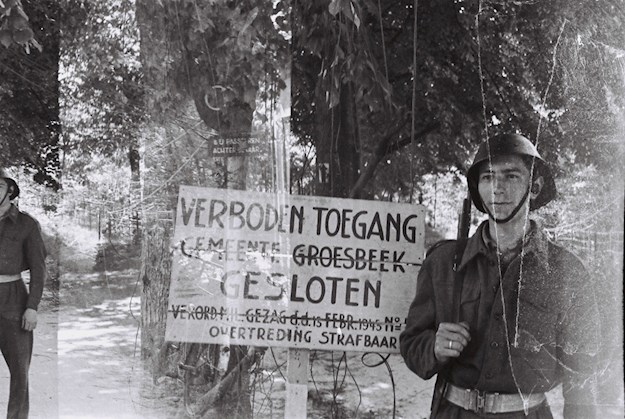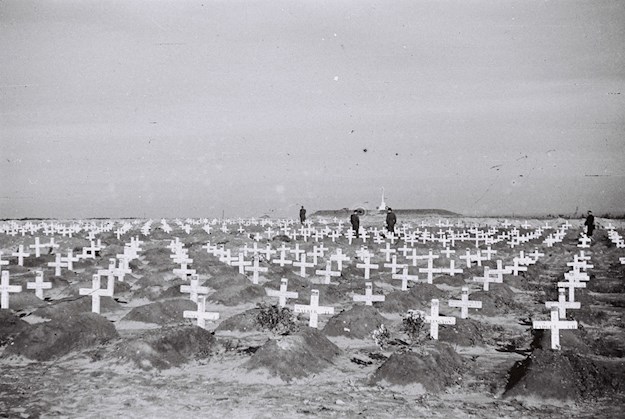- Wylerbaan 4, Groesbeek, Nederland
Autumn 1944: also known as the ‘frontline period’. The immense American air landings of Operation Market Garden had meant the liberation of Groesbeek but by October, fierce German counterattacks had led to the evacuation of the village. Some of the villagers had to stay behind, like the Janssen brothers whose house on Wylerbaan Road found itself right on the frontline. This is an unbelievable yet true story about what happened to the two brothers.
17th September 1944 saw the start of Operation Market Garden and, with it, the Battle of Arnhem. The Allies lost this battle, but the area around the city of Nijmegen was liberated, and the struggle for the city itself was won on 20th September 1944. However, for six long months, Nijmegen and the surrounding area subsequently found itself on the frontline and under continuous attack from German bombs and grenades.
Likewise, despite having been liberated on 17th September 1944, the area around Groesbeek soon became the target of terrible attacks from Kleve and the German Reischswald. Throughout the autumn of 1944, a total of 30,000 people were evacuated from Groesbeek and the surrounding villages. A farm in no man’s land is a story about what happened at Groenendaal Farm on Wylerbaan Road.
During the long winter of 1944-1945, the frontline barely moved from its position between the Maas and Rhine rivers, extending from Mook, through Groesbeek and Wyler on to Erlecom. Then finally, on 8th February 1945, Operation Veritable made a dramatic push that would ultimately result in the liberation of The Netherlands and western Europe. The mammoth Rineland Offensive had begun, and it started in Nijmegen.
Tourist information
National Liberation Museum 1944-1945, Groesbeek GPS code: 51˚47’7.87”N 5˚56’8.48”O


